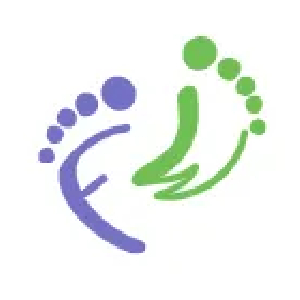Clubfoot in Children: Causes, Treatments and Care
Clubfoot in children is a common orthopedic condition that affects the foot and ankle. Learn about the causes, treatments, and care options available for children with clubfoot.
Published April 12, 2024.
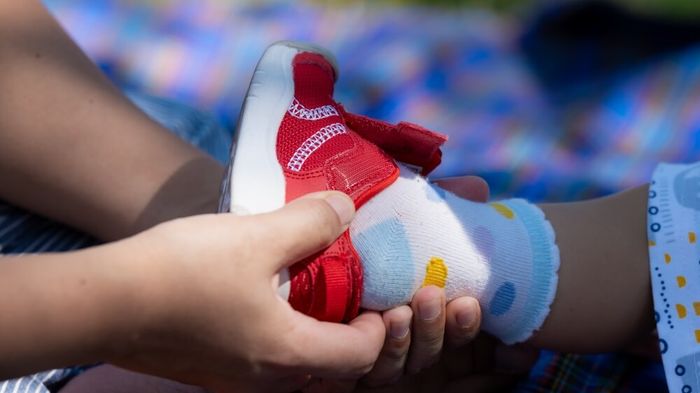
Clubfoot is the general term for talipes equinovarus or the deformity of the feet. Infants born with the condition have short and tight tendons connecting the leg muscles. This causes the inward twist of the foot. Children with clubfoot have one or both feet twisted with the soles facing inward or in more severe cases, upward, mimicking the appearance of a golf club. General characteristics of clubfoot include:
- One or both feet pointing downward
- One or both soles facing inward
- One or both feet are smaller than typical
- Toes are rotated inward
- The heel is smaller than usual, making the foot look rounder
- Calf muscles are underdeveloped
Clubfoot can be idiopathic or isolated, meaning the baby is otherwise healthy and the deformity is not a result or in conjunction with other medical issues. Other clubfoot cases are in combination of other congenital health conditions like spina bifida, arthrogryposis or neuromuscular disorders. The deformity can also be classified based on the severity of the twist. Mild and idiopathic clubfoot are easier to treat that severe and non-isolated clubfoot cases.
The deformity is quite common with one of every 1,000 children born being affected. Boys are more likely to have clubfoot than girls. It is painless and babies are unlikely to experience discomfort due to the condition. However, as the child grows, clubfeet will cause disability and discomfort. He will have difficulty in standing up, balancing, walking, and other activities on his feet. He will also have a hard time finding footwear that will fit comfortably.
Causes, Diagnosis and Prevention
The condition can be detected prior to birth. A prenatal ultrasound done around the 18th week of pregnancy or later can detect the irregular form of the feet, but it is only at birth that the condition is diagnosed. Early detection will not prevent its development, but it will prepare the parents and the doctors for the next necessary step, to treat the condition. Certain risk factors and environment have been linked to the condition including the following;
- Males are twice more likely to be affected than females.
- Babies born to a family with a history of clubfeet have higher chances of getting the condition.
- Mothers who smoke during pregnancy.
- Low level of amniotic fluid.
- The rare case of postural clubfoot results from the position of the baby while developing.
Treatments Methods for Clubfoot
There are many options to correct the position of the feet. Different clubfoot treatments and procedures apply to different levels of severity and other contributing factors. Although treatments can only be done after birth, it is recommended to treat clubfeet as close to the birth date as possible, ideally a week after date of birth.
Non-Surgical Treatments
Non-surgical treatments are first used to correct the positioning of the feet. Clubfeet are best corrected non-surgically to maintain and improve flexibility of the feet and ankles. For mild cases, wherein the feet are flexible, casting, manipulation and bracing can completely treat the clubfeet. Non-surgical treatments take advantage of the baby’s still soft and developing bones. Thus, it is best to start corrective procedures as soon as possible.
Ponseti Method
The Ponseti method of correcting clubfoot uses a series of non-surgical procedures to gradually treat the condition. This is the most popular and widely used clubfoot treatment procedure and is ideally done while the baby is few weeks old. Ponseti method has a 90% success rate of completely correcting clubfeet.
Manipulation and Casting. The treatment will usually start by gently positioning the feet correctly and holding the position with a cast. The feet will be adjusted and re-cast weekly until the correct position is achieved. This procedure usually takes about two months for mild cases and longer for more severe clubfeet. Flexible clubfeet can be fully treated with casting.
Achilles Tenotomy. To fully correct a clubfoot with a tight calf, a minor surgery is necessary. Achilles tenotomy is a minor procedure done to ease the tightness of the heel cord or the Achilles tendon. A small incision is used to ease the tendon. The feet are then re-cast to let the tendon grow normally. At this point, most cases of clubfeet are fixed.
Boots and Bar Bracing. Bracing prevents clubfeet to recur and the feet to stay on its proper angle and correct position. A brace contraption includes baby boots secured to a bar. Babies are required to wear the brace full-time for the first three months. Two 30-minute rests a day are allowed to let the feet breathe. After the initial three months, wearing the brace is gradually decreased to minimum of 14 hours a day, mostly at night and during nap time. Bracing can go from three to four years. Supportive and orthopaedic shoes and footwear are highly recommended during this period.
French Method
The French method of correcting clubfoot uses stretching, taping and splinting. This method is also referred to as the physical or functional therapy method. Procedures are mainly done by physical therapists and treatment sessions are started soon after birth. Significant improvements are seen after three months of continued treatment.
The baby’s feet are massaged and stretched daily. Then taping and splinting is done to maintain the correct position and foot movement. The regimen should be maintained daily during the first three months with at least three weekly visits to the therapist. Parents should learn the procedure to be able to do the massages at home.
Surgical Treatments
Surgical methods of treating clubfeet are only applied when non-surgical methods are unsuccessful or deemed ineffective as in the case of clubfeet associated with other neuromuscular complications. Most surgical methods are only to supplement the prior non-surgical treatments. The procedure usually involves only the re-alignment or easing of the Achilles tendon.
For more severe cases, a major reconstructive surgery will involve the extensive release of soft tissues, repositioning of the ankles, correcting tendons and ligament structures and stabilising the joints. The feet will be set in cast for 4-6 weeks. Upon removal, special shoes or brace will still be needed to prevent clubfeet from recurring.
Common complications of extensive surgical procedures to correct clubfeet include pain, stiffness and overcorrection.
Care and Support
Babies born with clubfeet do not feel pain. It is only as they start walking or standing on their feet that they feel the discomfort. However, not correcting the feet will result to multiple health issues, difficulties and confidence recoil as the child grows. Treatments might mean discomfort, additional costs and diligence for the first few years of your child’s life. In return, your child will enjoy a better, happier and an easier way of living.
Toddlers undergoing clubfeet treatments need special care, support and attention. They might not be as quick to run or stand as the other children their age. You might have to carry them around after few minutes of walk or hold their hand as they struggle to run. They might have insecurities or meltdowns due to the constant wearing of braces. You might not be able to find and buy them cute and colourful shoes that fit. But as a parent, you will still love and treasure every moment of your child growing and getting over his clubfeet.
First Walkers offers a wide collection of orthopaedic and special needs shoes for kids from 6 months to early teens. Our specially designed shoes come in fun, colourful and adorable designs that you and your child would surely love. Click here to check out our top-of-the-line special needs shoes.
Related Articles
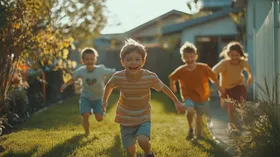
How to Get Rid of Your Child’s Plantar Warts at Home
Kerry Seaman
December 5, 2024

10 Non-Toy Gift Ideas for Toddlers and Young Kids
Jasrah Javed
December 5, 2024
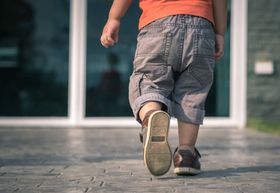
How to Prevent Kids Foot Injuries: Essential Tips for Parents
Leah Alexander
March 6, 2024

11 iPad Apps Both Toddlers and Mums Love
First Walkers AUS
December 6, 2024
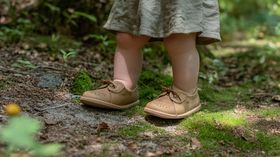
Are Barefoot Shoes Really Good for Growing Toddlers?
Caitlin Snethlage
February 19, 2025
